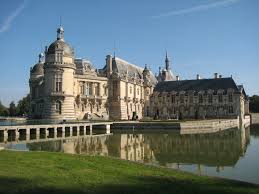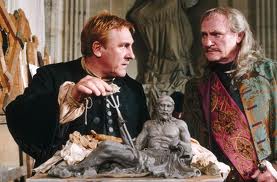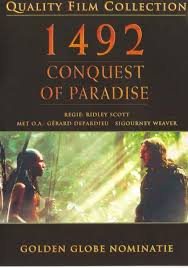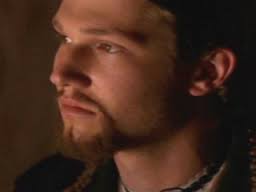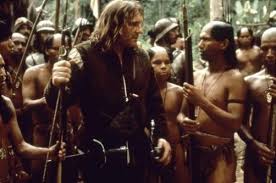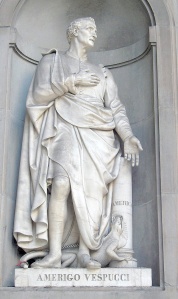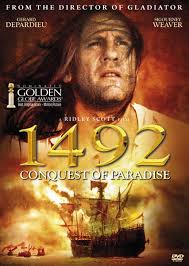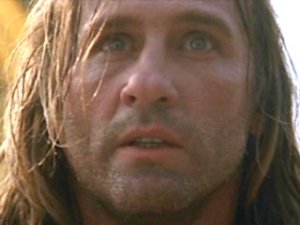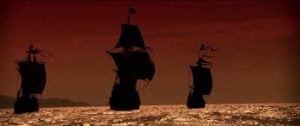Tags
17th Century France, Ancien Regime, Early Modern Europe, Early Modern France, Gerard Depardieu, Kings and Queens, Louis XIV, Marquis de Lauzun, Tim Roth, Uma Thurman, Vatel
Vatel (2000, dir. Roland Joffé) tells the story of Louis XIV’s three day visit to the Chateau de Chantilly, the palace of Louis de Bourbon, the Prince of Condé in 1671, during the lead-up to the Franco-Dutch War. It centers on Condé’s Master of Festivities and steward, François Vatel.
Vatel was one of the most celebrated chefs of his generation. He started as a pastry chef and came to work for Nicolas Fouquet, Louis XIV’s first finance minister. In 1661, when Louis came to visit Fouquet, Vatel orchestrated such a sumptuous festival that Louis used it as an excuse to arrest Fouquet for embezzlement (since he had already intended to ruin Fouquet). After that, Vatel came to serve Condé, one of the greatest generals of his day and a patron to a number of important French authors, including both Racine and Moliere.
Vatel is often, though falsely, credited with inventing whipped cream, which is sometimes called Chantilly Cream, especially in France. He may not have invented it, but he might have played a role in popularizing it.
The Chantilly Festival
In 1671, Louis announced his intentions to pay Condé a visit at his chateau at Chantilly. Such visits were a tool that Louis used to keep his powerful nobles in line, because they were an honor that could not be refused, but they carried with them the staggering burden of having to house, feed and entertain the entire royal court, which included around 600 nobles and several thousand royal ministers and servants. Forcing a noble to drain his financial reserves to host the king left them with less money with which to cause trouble for him, and made them dependent on him for financial favors.
Louis gave Condé and Vatel barely two weeks to make all the arrangements, and the unfortunate Vatel reportedly got little sleep in that period. He was a man of extremely high standards and became increasingly upset over small hitches in the execution of his grand festival.
Our best source for what happened at this festival is the letters of Madame de Sévigné, whose letters to her daughter and daughter-in-law are one of the most important records of life at the French court. Although she was not at the Chantilly festival, she apparently learned the details from another member of the court. The best way to describe the incident is to quote extensively from one of her letters.
“The King arrived Thursday evening; there was everything that one could wish: hunting, lanterns, moonlight, a walk, the meal in a spot carpeted with daffodils. People ate; there were a few tables where there was no roast, because there were several more people eating than had been expected. Vatel obsessed over this, saying several times “I have lost honour; here is an affront that I can’t bear”. He said to Gourville, “My head is spinning; I haven’t slept for 12 nights. Help me to keep things going”. Gourville helped how he could, but Vatel couldn’t stop thinking about the missing roast at the twenty-fifth and twenty-sixth tables (though not at the King’s table). The Prince went to Vatel’s room and said to him, “Vatel, everything is fine: nothing was as beautiful as that dinner for the King”. Vatel said to him, “My Lord, you are too kind. I know that there was no roast at two tables”. “Not at all,” said the Prince. “Don’t fret about it, everything is fine”.
“Night fell, but the fireworks, which had cost 16,000 francs, were a flop because it turned foggy. At 4 a.m., Vatel was everywhere (fretting) while everyone else was asleep. He met a small supplier doing a morning delivery, who had only two loads of fish. Vatel said to him, “Is this all?” The supplier replied, “Yes”. He didn’t know that when Vatel said “all”, he had been referring to the requests he had made from all the ports. Vatel waited a while, but no other deliveries came. He got in a frenzy, thinking he would have no other fish. He found Gourville and said, “I won’t survive this insult; my honour and reputation are at stake”. Gourville made light of it.
“Vatel went up to his room, put his sword against the door, and caused it to go through his heart; he had to do this three times, because the first two hadn’t wounded him deeply enough to kill him.
“At this point, fish deliveries began arriving from all over. People were looking for Vatel for instructions; they went to his room, forced the door, and found him in pool of his own blood. Some ran to tell the Prince, who was plunged into despair. The Duke cried, because he had come to Burgundy because of Vatel.
“The Prince told the King, with great sadness, that people were saying it was because of Vatel’s pride; people were both praising and blaming his courage. The King said he had put off coming to Chantilly for five years because he understood how much stress his visits caused. He said that from now on, the Prince should only worry about feeding two tables of people, and not worry about the rest. He said he wouldn’t allow the Prince to go to such great effort anymore, but that it was too late for poor Vatel.
“Gourville undertook to make up for the loss of Vatel, and did it. Everyone ate well, walked, played, hunted, the perfume of daffodils was everywhere, everything was enchanting. Yesterday, which was Saturday, everyone did the same again, and in the evening, the King went to Liancourt, where he ordered a late supper.”
It seems clear that Vatel’s suicide was driven by a combination of high standards, the stress of being responsible for the entire royal court, lack of sleep, and what he saw as a disastrous stroke of bad luck. We might also suspect he was a high-strung man.
The Film
Roland Joffé (working from a script by Jeanne Labrune and Tom Stoppard) turns the Chantilly festival into an exploration of the French court under Louis XIV. In the film, which explicitly declares itself to be a ‘true story’, Condé (Julian Glover) is informed by the Marquis de Lauzun (Tim Roth) that Louis wishes to visit and enjoy the simple pleasures of the country, which, Lauzun explains, means that Condé should spare no expense whatsoever to entertain the king. Condé then tells Vatel (Gerard Depardieu) that he has good news and bad news. The bad news is that the king is coming to visit Chantilly and the good news is that France might go to war with Holland. Condé is bankrupt and needs the king to pay his debts, and war means that the king will need Condé’s services as a general. So, if the festival goes well and war does happen, Condé will probably be able to get the king to pay his debts. (The idea that Condé was bankrupt is improbable; he was an extremely rich man.)
And so the film unfolds as the French court descends on Chantilly and Vatel works to orchestrate this enormous festival. The film is chiefly interested in two things: the enormous effort it takes to feed the court and stage the entertainments, and the complex intrigues of the French court. In this second plotline, the chief figures are Lauzun; the king’s brother (known as Monsieur); and Anne de Montausier (Uma Thurman), a minor member of the court who is the king’s most recent lover. Lauzun wants to sleep with Montausier, who is not interested in him, but she grows increasingly interested with Vatel because he is not interested in the complex games played by the court, while Monsieur is sexually attracted to Vatel’s adolescent protégé and grows offended when Vatel refuses to give him to Monsieur.
Someone who is clearly much more knowledgeable than I am about Louis’ court wrote a very lengthy discussion of the courtly characters of the film, which you can read here. So rather than commenting of the accuracy of the characters, I’ll focus on other things.
Perhaps the most valuable thing about the film is the way that it focuses so much attention on what goes on behind the scenes at a 17th century palace. Vatel’s scenes concentrate very heavily on his efforts to direct the enormous army of cooks and servants who are critical to the success of the festival. We watch Vatel overseeing the cooks, telling them how to prepare various dishes. When problems arise, he improvises a variety of solutions. (when he realizes that he does not have enough meat to serve everyone at the first dinner, he orders a cook to produce a dish with mushrooms. When someone asks what meat is in the dish, he replies “unicorn”.) Lauzun asks Vatel to produce a spun sugar masterpiece to impress Montausier. Because he is so busy, Vatel refuses, until Condé orders him to do it, and so we get to watch him produce a bowl of fake sugar fruit.
The film also addresses the various problems of supply that Vatel faces. Early on, the tradesmen of Chantilly refuse to provide him with any further supplies until Condé pays their bills. Vatel explains that unless the festival is a success, Condé will not be able to pay, so they have to extend him further credit to have any hope of getting their money. While this may not be historically accurate in Condé’s case, it is an excellent example of a real problem that nobles and the businessmen they patronized experienced. In another scene, an entire shipment of glass candle-globes arrive broken because the roads were too rough, and Vatel has to improvise a replacement for them.
Equally interesting are the entertainments themselves. The film shows us two elaborate theatrical spectacles offered for the king’s amusement. Here’s the first one:
The second one involves an elaborate fireworks show that accompanies the arrival of an enormous whale, which opens its mouth to reveal a singer who is lifted above the banquet by a complex system of pulleys. I don’t know enough about 17th century engineering to know whether these two shows were actually possible with the technology of the time (if I had to guess, I’d say the film is probably exaggerating somewhat), but they are certainly suggestive of the kinds of entertainment that 17th century kings liked to see, and of the theatricality of Louis’ court, which was key to his success as a monarch.
The Court
The other half of the film dwells on the life of the court, and here I think the film is somewhat less true to its source material. The members of the court as shown as being extremely decadent. Louis has brought both his formal mistress, Madame de Montespan and his actual mistress, Montausier, and Lauzun wants to sleep with the latter, even if it means blackmailing her. When he sends her Vatel’s impressive fake fruit masterpiece, she doesn’t even look at it before rejecting it, so Lauzun randomly selects another woman of the court to receive the gift; the message here is that Lauzun and Montausier are too jaded to appreciate it for the work of art that it is. In another scene, Monsieur takes revenge on Vatel by casually breaking the whale prop.
The court gambles constantly. Early on, Condé makes the mistake of playing too well and has to start losing intentionally, just to please the king. (“Has Condé lost his chateau?” “Not if he plays his cards wrong.”) Later, Louis and Monsieur casually bet expensive jewelry in another game. Condé tries to demur, saying he has nothing so valuable to wager, but Louis orders him to wager Vatel. Vatel, who is devoted to Condé and has trusted him enough to make major sacrifices, is upset to learn of the betrayal.
The whole point of these scenes is to contrast the jaded nobles, who have no regard for anyone beneath them, with Vatel, the commoner who is far more moral and decent than the people he is keeping entertained. The only member of the court who has any morals is Montausier, who increasingly feels a connection to Vatel as the only decent man around her.
When Vatel finally commits suicide, no one seems to actually care. The king is told that Vatel did it because the fish hadn’t arrived, but that’s not the real reason. But Madame de Sévigné’s letter makes clear that many people were in fact distressed by Vatel’s suicide, and the king seems to have acknowledged his role in the man’s death. So the suggestion that the court was too decadent to value human life is unfair.
Depardieu’s Vatel seems a very different man from the real one. Whereas the real Vatel was stressed out, deeply concerned with his honor and reputation, and probably suffering from sleep deprivation, the cinematic Vatel is not concerned with honor and reputation so much as being a decent man. When the king summons him to compliment him, Vatel refuses because he is too busy. He wants the festival to go right, not because it’s a matter of honor, but because he’s committed to doing what he’s said he will do and because he wants Condé to do well. He’s not high-strung; he’s quite solid and serious, more so than the people around him. His suicide has little to do with the fish; that problem is simply the last straw, and he seems to have decided to kill himself already.
So the film’s treatment of the court of Louis XIV is somewhat negative and acts mainly to establish the protagonist’s virtue. But the film is worth a look for its depiction of a facet of court life that is too rarely shown, the hidden underside of the cooks, the purveyors, the servants, and the other little people. Unlike recent productions like Downton Abbey, the film isn’t interested in most of them as people, but more in the work they are doing to feed and entertain the court. This nameless army are as much the heroes of the film as Vatel.
Want to Know More?
Vatel is available on Amazon.
I doubt there’s much written on Vatel himself, but if you want to know about Louis XIV, there are a lot of biographies, such as Richard Wilkinson’s Louis XIV (Routledge Historical Biographies). This is a little off-topic, but one of my favorite books about Loui’s court, Strange Revelations: Magic, Poison, and Sacrilege in Louis XIV’s France (Magic in History)deals with the occult demimonde of 17th century Paris; it goes into considerable detail about the complex social and sexual hierarchies at court.


